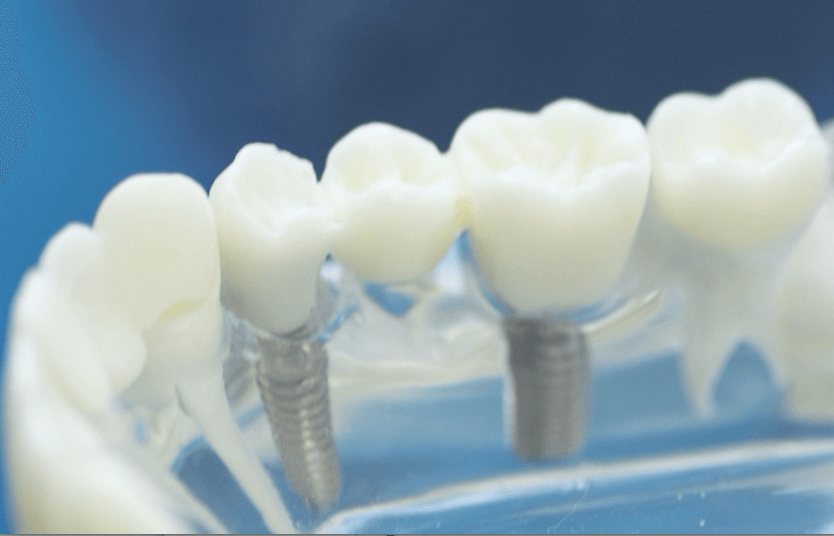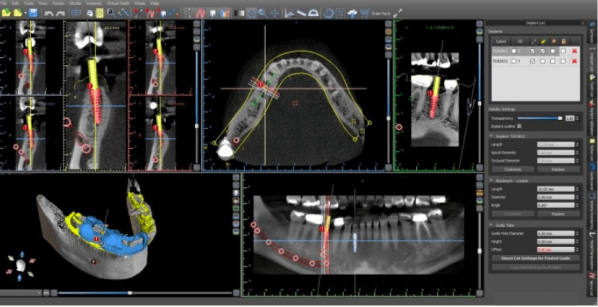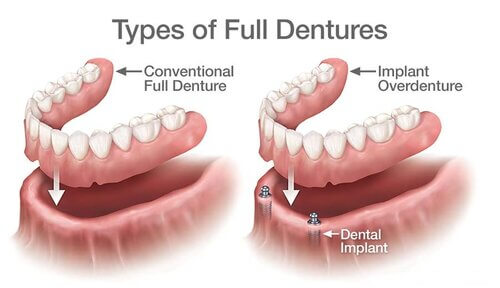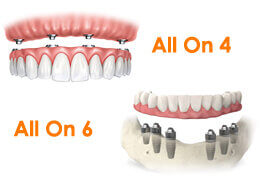
Dental implants are artificial tooth roots that are surgically placed into the jawbone. Over the course of several months, the bone surrounding the implant grows, holding it securely in place. Replacement teeth are then attached with a metal connector to the implant, filling in the gap.
Missing teeth can throw your bite out of alignment, altering your facial shape. They can also make you self-conscious about your smile.
If you choose to replace missing teeth, your dentist may recommend artificial teeth that are attached in or near the jawbone with a dental implant.
Missing teeth can throw your bite out of alignment, altering your facial shape. They can also make you self-conscious about your smile.
If you choose to replace missing teeth, your dentist may recommend artificial teeth that are attached in or near the jawbone with a dental implant.
Dental implants are artificial tooth roots that are surgically placed into the jawbone. Over the course of several months, the bone surrounding the implant grows, holding it securely in place. Replacement teeth are then attached with a metal connector to the implant, filling in the gap.
What Are The Procedures Involved When You Are Receiving a Dental Implant?
Dental implants usually resemble small screws, and they are made from body-safe materials, such as titanium.
When you are receiving dental implants, they are surgically inserted into the jawbone where they take the place of tooth roots. One implant can be used to anchor one or several teeth.
Dental implant procedures require multiple steps over a period of around 3 to 9 months.
EVALUATION
The first step will be getting your teeth, gums, and jawbone evaluated. An important part of this initial assessment is determining whether you have enough healthy jawbone to maintain the implant. Radiographs and Cone-Beam CT images are usually required for diagnostic purposes, which can be done at our surgery.
If your jawbone is too thin or soft, a bone graft or other procedure may be suggested before beginning the dental implant process. Your gums must also be free of periodontal disease.
Dental implants are done to replace one or more teeth. The number of teeth you wish to replace will determine the type and scope of the procedure you can expect.
Dental implant surgery may be done in the chair under local anaesthesia or inhalation sedation, or in the theatre under general anesthesia. Your dentist will let you know ahead of time which type of anaesthesia you’ll need.

PLACING THE IMPLANT
When you have a dental implant surgery, an opening would need to be created through the gums after your mouth is fully anaesthetised. An implant screw will be inserted into the jawbone. If you choose, a temporary, removable denture can be placed over the surgical site, for aesthetic purposes, until the permanent tooth can be attached to the implant.
After the implant surgery, you can expect to feel some discomfort and swelling afterwards. This may last for several days. Most people find that they can resume their daily activities the day after a dental implant has been placed. Your may be prescribed with antibiotics and painkillers to make you feel better.
OSSEOINTEGRATION
After the dental implant is placed, it will take anywhere from 2 to 6 months before enough new bone growth occurs around the screw. This process is known as osseointegration, meaning “combining with the bone.”
During osseointegration, natural jaw bone will strengthen and grow around the dental implant. This keeps it firmly in place, so it can function as the artificial tooth’s root.
ABUTMENT PLACEMENT
A metal extender called an abutment is typically added to the implant. This may be done during the initial procedure or during a second minor procedure under a local anesthetic.
Abutments are used to connect the replacement tooth to the implant.
If an abutment is added during a second procedure, the surgeon may need to make an incision if gum tissue has grown over the implant. This is because a healing cap is placed over the implant after the implant is placed. While this is used to protect the implant, it also typically prevents tissue from growing over it.
The gums will take several weeks to heal after the abutment placement.
PLACING THE TOOTH
Once healing is complete, your dentist will take an impression of your teeth so that your permanent replacement tooth or teeth can be made to fit. These can be fixed or removable.
If you opt for a removable tooth, it will be mounted onto a metal frame and attached to the abutment. This type of tooth can be removed at home for daily cleaning.
If you opt for a fixed tooth, it will be permanently cemented or screwed onto the abutment.
After the process is complete, let your dentist know if your mouth feels uncomfortable in any way or if you experience:
- ongoing discomfort
- severe pain
- bleeding
- swelling
- uneven or uncomfortable bite
Your new teeth will look and feel natural. They must be cared for with daily brushing and flossing. No special materials are needed to clean them. You can treat them the same way you treat your natural teeth.
Make sure to also see your dentist for regular checkups.
Multiple Implants
If you have multiple missing teeth, we can attach a bridge to implants on either side of your missing teeth. This means that you do not need one dental implant per each missing tooth. This will reduce the risk of further loss of natural bone, and provide a beautiful, seamless and functional result.
To replace all your teeth, dentures or bridges can be attached to the implants. A full arch implant-supported bridge leaves the gums free and does not cover your palate, so food tastes like it should and your teeth function like they used to. Imagine being able to eat, talk and laugh again without worrying! That’s the life-changing impact of dental implant technology.
Two parts make up your All-On-4 /All-On-6 dental implants: the titanium tooth implants and the implant tooth bridge. We know that wearing removable dentures often means missing out on the good things in life, like enjoying the food you love. Whether you live with them, or you’re just starting to explore your tooth replacement options, know that you don’t have to endure the experience of wearing dentures.


Other Teeth Replacement Options
Dentures
Dentures are also known as plates or false teeth. They fit over the gums and are removable. Unlike dentures, a full mouth dental implant is cemented or screwed into the jaw and treated like natural teeth.
Dentures can be full or partial. They’re less expensive than implants but may not last as long. They also might require adhesive to keep them in place.
Dentures are typically covered by dental insurance.
Dental bridges
Dental bridges are another alternative to implants. A bridge is a false tooth or teeth that’s anchored in place by the teeth on either side of the gap. These healthy teeth are typically drilled down so that a crown can be placed on top of them.
Bridges don’t require drilling into the jawbone. They’re less expensive than implants and are typically covered by dental insurance. They might need to be replaced due to decay or broken or fractured porcelain, but many can last a very long time.
Talk To Us
Missing or damaged teeth can be caused by injury or infection. If you’re bothered by the appearance of a gap in your mouth, talk with your dentist about the best type of procedure for you.
Since your existing teeth may shift in an effort to lessen the gap, missing teeth may alter your jaw or facial shape over time. They can also affect your bite.
If you have missing teeth, talk with our dentist about options for filling the gaps. All surgical procedures carry risk. Always talk to our dentist for an opinion before proceeding
